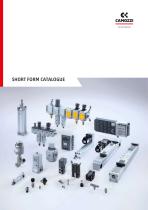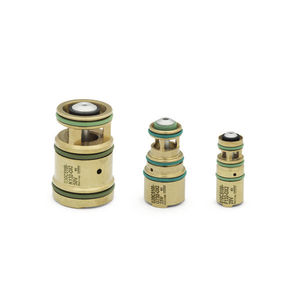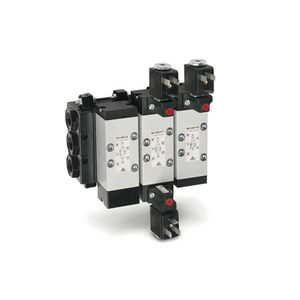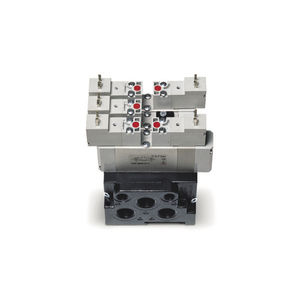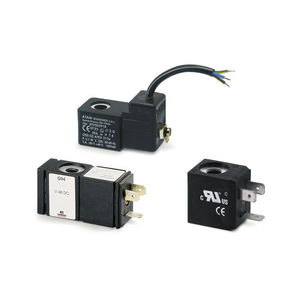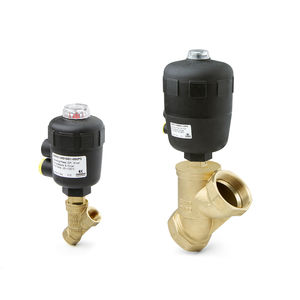
- Hydraulics - Pneumatics
- Valve
- Piston valve
- CAMOZZI AUTOMATION
Angle seat valve ASX seriespistonpneumaticfor control
Add to favorites
Compare this product
Characteristics
- Type
- piston
- Operation
- pneumatic
- Function
- for control
- Media
- for water
- Body
- flange, angle seat, stainless steel
- Applications
- industrial, for the chemical industry, for the food industry, for viscous liquids, beverage, for the gas industry, for the pharmaceutical industry
- Number of channels
- 2/2-way
- Other characteristics
- normally closed, double-acting, normally open, for high flow rates, ATEX
- DN
Max.: 100 mm
(3.937 in)Min.: 8 mm
(0.315 in)- Pressure
Max.: 16 bar
(232.1 psi)Min.: 0 bar
(0 psi)- Temperature
Max.: 220 °C
(428 °F)Min.: -10 °C
(14 °F)- Flow rate
Max.: 132 m³/h
(4,661.54 ft³/h)Min.: 2 m³/h
(70.63 ft³/h)
Description
Angle seat valves are available in different versions with regard to nominal diameter, type of fluid and process connections.
They are able to manage media that are corrosive or contain suspended solid particulate matter and can be used in applications with high operating temperatures.
The operation is determined by the pneumatic drive of a single acting, guided piston actuator with spring return.
There are also models available with double acting actuators, without spring.
For liquid media we recommend the models with flow direction under the seat.
For gas or steam we recommend the models with flow direction above the seat.
Benefits:
High flow rate
Low fluid resistance
Versions available that prevent water-hammering effects
Compliant with Directive PED 2014/68/EU
Compliant with the ATEX Directive
Sectors and applications: Textile - Chemical - Pulp & Paper - Food & beverage - Energy - Pharmaceutical & Cosmetic - Air & gas treatment - Water treatment - Stream & Hot water treatment
Catalogs
Other CAMOZZI AUTOMATION products
Solenoid, pneumatic and manifold valves
Related Searches
- CAMOZZI valve
- Hand valve
- CAMOZZI control valve
- Stainless steel valve
- Ball valve
- Water valve
- Pneumatic valve
- Threaded valve
- CAMOZZI solenoid valve
- Valve with flange
- Regulating valve
- Stop valve
- Flap valve
- Non-return valve
- CAMOZZI gas solenoid valve
- CAMOZZI directional control valve
- CAMOZZI NC solenoid valve
- Biogas valve
- CAMOZZI 2-way solenoid valve
- Pneumatically-operated valve
*Prices are pre-tax. They exclude delivery charges and customs duties and do not include additional charges for installation or activation options. Prices are indicative only and may vary by country, with changes to the cost of raw materials and exchange rates.


